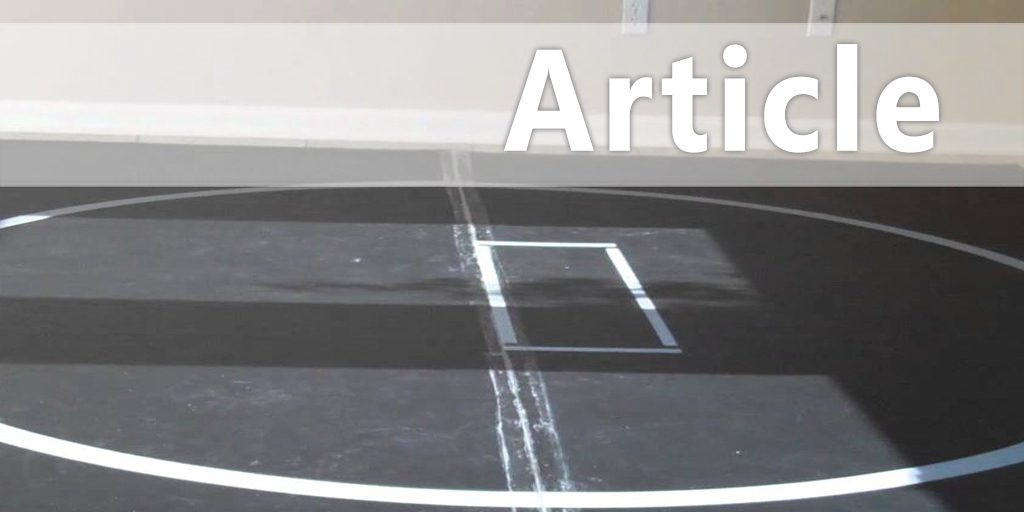|
Inside Control
Today, wrestlers attempt one or two escape or reversal moves in com-petition; then, if the maneuvers fail, the wrestler stops, and his opponent commences to control him. One vivid example of this problem lies in how the 30-second tiebreaker has changed over the last few years. Initially, the wrestler who chose the bottom position was very confident of escaping with a quick stand-up. That approach has been compromised. It is time to again place more importance on the escape-and-reversal defense during the entire match. Wrestlers must be exposed to more drill instruction to improve this area of weakness, and this can be accomplished only on the practice mats. The following drills are designed to help develop wrestlers' skills in the defensive position. Likewise, you will be exposed to escape and reversal counter drills in the offensive position. INSIDE CONTROL IN THE STANDING POSITION Setup The drill begins in a standing position with W2 behind Wl. Action It is important to be in good position, with Wl's head up, back straight, buttocks down, elbows in, and knees bent. During inside control drills, the most important body parts for WI range from the inside of the elbow up to the armpit. WI gains inside control of the body by keeping the elbows firmly against his body to stop W2 from getting inside (a). (If W2 does get inside, WI should use a windshield-wiper motion with the arms to regain inside control.) Having gained inside control with the arms, WI then works on controlling W2's hand or hands (b). At this point, WI cuts and escapes (c). Coaching Points The offensive wrestler's goal is to try to lock his hands around the defensive wrestler's waist or gain wrist control on the defensive wrestler. The defensive wrestler's goal is to get inside control before the offensive wrestler does. If the offensive wrestler gets inside control, start the drill over. With practice, the defensive wrestler should be able to perform this drill with his eyes closed, feeling where the offensive wrestler is at all times. The defensive wrestler must never reach with the hands to get control. This action causes the defensive wrestler's elbows to come out from his body, allowing the offensive wrestler to get inside.
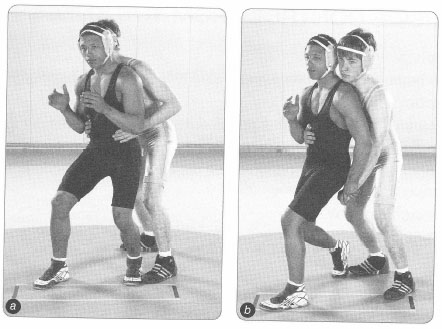
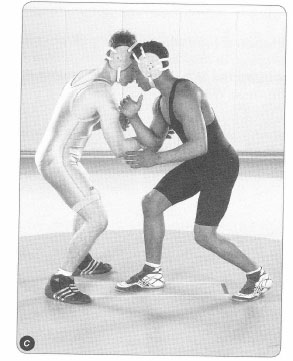
W1 begins this drill on one knee with W2 behind him. Coaching Point When an escape has occurred, often the opponent momentarily relaxes. This is the time for a quick takedown maneuver. It is important that the defensive wrestler not ball up as he is executing the escape so the offensive wrestler cannot cradle him in a real match situation. Balling up is a common error with this stand-up drill. Variation As the year progresses, W1 can add a finishing variation to the inside control drill after escaping. In the knee position, after escaping, W1 can snap W2 down and spin behind him. In the standing position, W1 can shoot a double-leg takedown on W2.
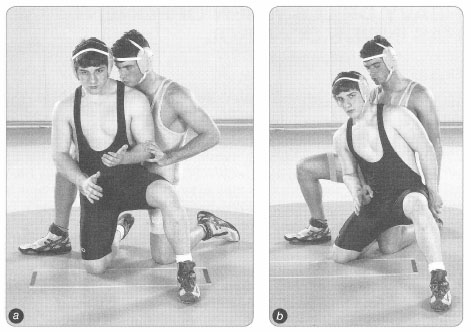 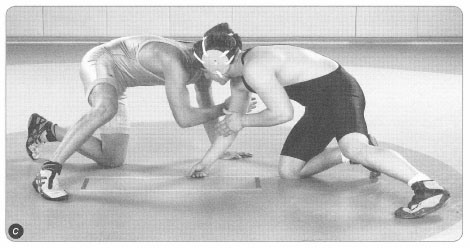
Setup W2 has inside control (hands locked) in the standing position behind Wl. Action When W2 gains inside control in the standing position, there are two tech-niques WI can use to make his body "heavy" and prevent W2 from bringing WI to the mat. The first technique involves WI pushing W2's leg away from his body while WI forces his own hips away (a) . The second technique is taught when W2 is up tight against M.'s body. If W2's hips are close to Wl's hips, WI locks one of his legs on the outside of W2's leg (b). Coaching Points Stress that this drill eliminates the offensive wrestler's ability to lift his opponent off the mat. It is easy to teach and very effective for stopping the offensive wrestler from bringing the defensive wrestler to the mat. 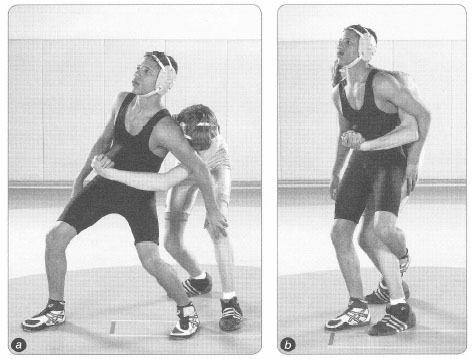 |
|
|
